Text
“it’s going to be WW3!!” no bitch it’s going to be vietnam, korea, afghanistan, it’s going to be another war wherein the US commits unspeakable and indefensible acts against a severely weakened people seeking self determination. it’s going to be another war where protesting is criminalized and “freedom of speech” is gutted in the interest of pushing propaganda. it’s going to be another nation of people added to the long list of victims of US imperialism and another demonstration of the strong undercurrent of fascism running through the foundation of america
30K notes
·
View notes
Text
Successful trans men
I wish I knew about men like these growing up, I wish I knew that trans men could be successful after a lifetime of never seeing anyone ‘like me’ excelling in life. So here are some trans men - some that you may have heard of, some that you may not - that are successful in a range of careers. Never let being trans hold you back, never think you can’t do something, never think there is not a place for you.

Ben Barres
American neurobiologist for Stanford University and advocate for women in science. Barre’s research on the interactions between glial cells and neurons changed the way that we understand the brain and opened up a whole new field of research.

Stephen Whittle
Professor of equalities law. Founder of FTM Network in 1989 and Press for Change in 1992. Whittle has been heavily involved in trans activism since joining the Self Help Association for Transsexuals in 1979. His research and activism has been instrumental in ensuring the rights of trans people in the UK.

Michael D Cohen
Actor, teacher and coach. Making his break in award-winning Nickelodeon sitcoms Harvey Danger and Danger Force he was the first series regular actor to publicly come out as transgender. Cohen has a BSc in cell biology and a masters degree in adult education, teaching at his own acting studio and providing workshops.

Chris Mosier
American triathlete and award-winning coach. Six time member of Team USA in both duathlon and triathlon, Mosier also won two national championships in racewalking and was the first transgender athlete to qualify for the Olympic trials to compete against other members of his gender.

Yance Ford
African-American film producer and director. Ford received an Emmy for Exceptional Merit in Documentary Filmmaking and was nominated for an Oscar for his part in producing and directing the documentary Strong Island which follows the death of his brother.

Kael McKenzie
Canadian judge. Serving in the Canadian Armed Forces for several years, McKenzie later attended law school and and worked as a lawyer before being appointed as a judge to the Provincial Court of Manitoba in 2015.

Shane Ortega
Native American former flight engineer in the US army, former marine and professional bodybuilder. Throughout his career Ortega has served in Iraq and Afghanistan in over 400 combat missions. He has a long history of advocating for the repeal of Don’t Ask Don’t Tell and the recent banning on transgender service members in the US army.

Drago Renteria
Chicano photojournalist and deaf and LGBT activist. Renteria founded the Deaf Queer Resource and is CEO of DeafVision - a webhosting and development company run by deaf people and the founder of the National Deaf LGBTQ Archives. Renteria has been instrumental in both creating and hosting many online deaf/queer spaces online along with being heavily involved in real-world activism for decades.

Phillipe Cunningham
Elected city councillor for ward 4 Minneapolis and previous special education teacher, Cunningham holds a masters degrees in Organizational Leadership & Civic Engagement and in Police Administration and is passionate about tacking inequalities in his community.
78K notes
·
View notes
Text
34K notes
·
View notes
Text

Cicada (Tacua speciosa), family Cicadidae, found in SE Asia
photograph by EnnisFei (@ennisanna_fei)
3K notes
·
View notes
Text
one of my fave things about spiders is how they walk. theyre so thoughful and melodical about every step and i think thats really cute. they pause when they're unsure and approach everything with this poise about them.
from the perspective of my engineering degree, its also really cool how they move their legs using hydraulics of their own haemolymph (bug blood).
they also have little toe beans. thats also great.
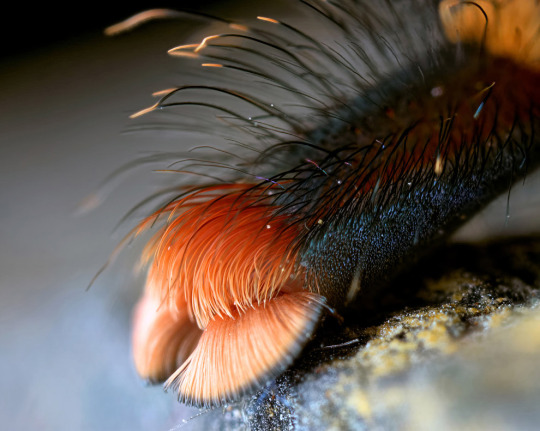
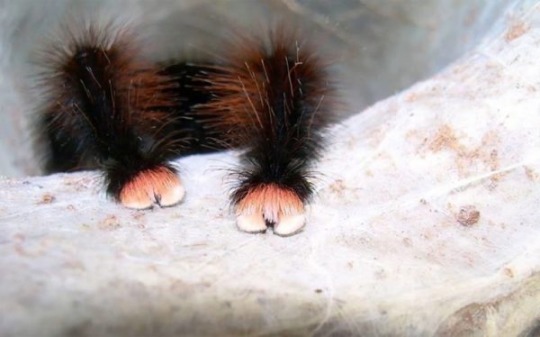
hehehghsh look at them
1K notes
·
View notes
Text
Wet Beast Wednesday: tardigrades
Last week on Wet Beast Wednesday I covered the largest animals to ever exist on our planet. This week I'm going to pull a full 180 and cover the smallest animals yet on this series. Meet the tardigrade, the internet's favorite micro-animal the is said to be basically immortal. How true is that? Let's see.

(Image: an electron microscope image of a tardigrade. It looks a lot like a potato with eight stubby legs tipped with long claws. At the front is a small, circular mouth. It has no other discernable features. In the background are bits of plant matter that look like seaweed at this scale. End ID)
The tardigrades are 1,300 known species (and probably a lot of unknown ones too) in the phylum Tardigrada. They are also part of the superphylum Ecdysozoa, which are animals that grow by molting their outer cuticles or exoskeletons. In particular, the tardigrades are believed to be a sister group of the arthropods, the group that contains crustaceans, insects, isopods, and a lot of other things. Tardigrades are truly tiny, the largest species reaching a whopping 1.5 millimeters in length, though most species reach no more than 0.5 mm. They have round, segmented bodies with four pairs of legs that end in either claws or suction discs. The body segments consist of a head, three body segments with a pair of legs each, and a caudal segment with the final pair of legs. The first three legs are used for movement while the final pair points backwards and is used for grabbing onto substrate. All of the body segments except for the final one correspond to segments found in the head section of insects. Tardigrades are missing many hox genes, genes that direct the body plan during development. Their ancestors may have had a body plan more similar to insects, but the loss of the hox genes has compressed them into walking heads with a bit of butt. The mouth is tubular and sucks in food. In the mouth are stylets, needle-like structures used to pierce food objects. Once food is drawn into the mouth, a structure called the buccopharyngeal apparatus activates. This is a combination of spines and muscle that acts like an inner jaw that pulls food into the digestive tract. The buccopharyngeal apparatus is distinct enough to be used as a major identifying feature between species. Tardigrades are translucent and many images you've seen of them have false color to show the details or are 3D models based on scanning electron microscope imagery of them. Tardigrades molt their exoskeletons multiple times (up to 12) during their lifecycle. Some species are unable to poop normally and instead all their waste is discarded during the molt. It was formerly believed that tardigrades could exchange genes with each other without mating, a process called horizontal gene transfer that is seen in bacteria, archaea, and other micro-organisms. It has since been discovered that while still capable of horizontal gene transfer, it is quite a bit rarer in tardigrades than we thought.
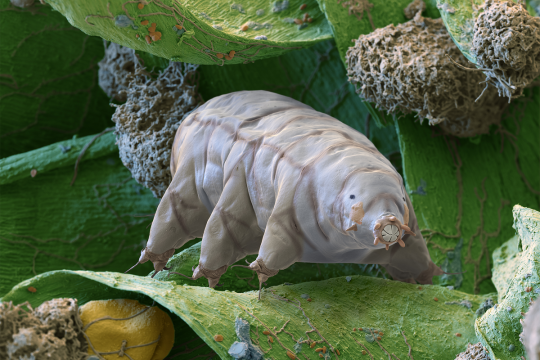
(Image: an electron microscope image of a tardigrade standing on a bit of plant matter. This one has a closed mouth with a ring of triangular tooth-like structures. It also has two simple eyes that look like black dots. End ID)
The name "tardigrade" means "slow walker", which is fitting as, despite their eight legs, tardigrades have a slow and awkward gait. This is the result of their legs being unjointed, only able to pivot at their connection to the body. Their gait has been compared to that of bears, hence why they are often called water bears and their discoverer, Johann August Ephraim Goeze, called them "kleiner wasserbär", meaning "little water bear". Tardigrades are found worldwide and have inhabited virtually every habitat, from the tops of mountains to the deep sea, from hot springs to the antarctic, from freshwater to saltwater. The one thing they have in common is a need to stay wet. Tardigrades can survive out of water as long as they can stay moist and are often found in mosses, hence another common name: moss piglets. The majority either eat plants or bacteria, but some will feed on smaller tardigrades or other micro-animals. Their famous survivability makes it easy for tardigrades or their eggs to be carried to new habitats by larger animals or other phenomena. Tardigrades are one of the first micro-animals to colonize a new habitat and they are a pioneer species, the first species to colonize a new environment and whose presence makes that environment fore suitable for other species to follow. Tardigrades are a major food source to other micro-animals and larger organisms. Most species have distinct males and females, though a few reproduce through parthenogenesis. In most cases, molting female will lay her eggs in her shed cuticle and males will them fertilize them. Other species have a form of internal reproduction. Males and females will court each other before mating and females will usually allow multiple males to fertilize her eggs. Female tardigrades are typically larger and more abundant than males. Eggs can take up to 14 days (species dependent) before hatching. All tardigrades of the same species have the exact same number of cells as each other. They are also born with the same number of cells they will have as an adult. Their growth is driven by enlargement of the existing cells rather than cellular reproduction making new cells. The lifespan ranges between a few months to a few years, depending on species.

(Image: a color photo of a tardigrade. It is a pale, translucent white, making it hard to make out details. Its body is curved, with the front end pointing at the camera. It has two simple eyes. End ID)
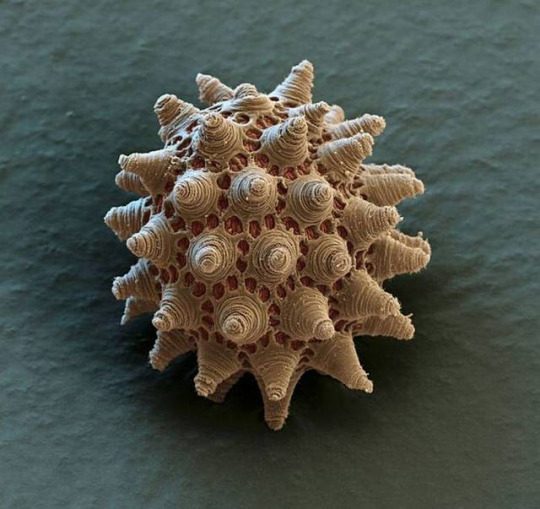
(Image: an electron microscope image of a tardigrade egg. It is round but covered in small pores and conical structures. End ID)
The most famous feature of tardigrades is their legendary durability. It is commonly said that tardigrades can survive just about anything (except for the things that are actually trying to kill them. They are prey to a lot of species after all). Among the things they can survive is extreme heat, extreme cold, dehydration, extremely high and low pressure, exposure to ionizing radiation (that's the scary kind), low oxygen environments, environmental toxins, heavy impacts, and the vacuum of fucking space. While the can survive in extreme conditions, tardigrades are not considered extremophiles. True extremophiles thrive in extreme environments and are negatively impacted by leaving them. Tardigrades can survive in extreme environments, but are negatively impacted and can't survive as well there as they can in less extreme places. The main trait that has allowed tardigrades to survive all five mass extinctions in history is cryptobiosis. Cryptobiosis is the rare ability for an animal to enter a state of dormancy where their metabolic processes come to an almost complete stop. While in cryptobiosis, metabolic activity drops to 0.01% normal and water content drops to 1% normal. In this state, the tardigrade is called a tun. Tardigrades usually enter cryptobiosis in response to arid conditions. One experiment showed that a species of tardigrade could last for at least 30 years in this state and return to normal lifestyle functions when exposed to water. Tardigrades will also enter cryptobiosis in response to low oxygen, toxic chemical exposure, increased or decreased temperature, and excessive salt content in the water. Tardigrades also show extreme resistance to both high and low pressure. They can live in 0 atmospheres of pressure and some species can survive up to 6,000 atmospheres, more than double the pressure at the bottom of the Marianas trench. More interesting is their ability to survive dangerous radiation. They can survive 1,000 times the dose of gamma radiation that humans can. Early tests focused on tardigrades in cryptobiosis and concluded that the extremely low water content of a cryptobiotic tardigrade doesn't leave much opportunity for the radiation to react with the animal. However it was later found that active and fully hydrated tardigrades are still considerably resistant to radiation. Studies into this resistance indicate that tardigrades can very efficiently repair damaged DNA and have unique proteins called Dsup that provides additional protection. Dsup introduced to human cells has provided additional protection against x-rays.
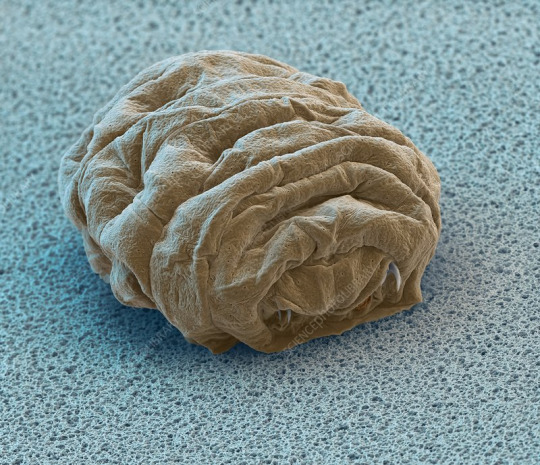
(Image: an electron microscope image of a tun - a tardigrade in cryptobiosis. It is smaller and very wrinkly, with the legs and mouth retracted into the body. End ID)
Tardigrades were the first animals to be exposed to the vacuum of space. They were exposed for 10 days, some in a state of cryptobiosis at the time of exposure and some still active. It was found that they were able to survive the vacuum when shielded from the sun's ultraviolet radiation, with those already in cryptobiosis doing better. Upon being rehydrated, many were able to resume normal life functions and successfully reproduce, though others died after being rehydrated. Those that were exposed to UV radiation fared much worse, with only a few hydrated individuals surviving. The individuals in cryptobiosis had a lower survival rate when exposed to UV than those not exposed to UV and were less successful at reproducing afterwards. Studies of tardigrade's space survival abilities and resistance to radiation could go a long way in helping human space travel. One of the largest dangers of space travel is that space is full of nasty radiation from the sun that Earth's magnetic field protects us from. Some scientists speculate about the possibility of accidentally seeding other planets or moons with tardigrades or other space-resistant organisms. This is a problem because introducing Earth life to other world has the potential to damage any native ecosystems and if we find life in space in the future we don't want to have to figure out if it's something we accidentally put there. While tardigrades could likely survive on other planets, they would eventually die without a food source. Some sources reported that tardigrades may have colonized the moon after an experiment with them crashed. Unfortunately, the moon is not crawling with tardigrades now. It's way too dry for them to exit cryptobiosis even if they survived the crash, which they probably didn't.
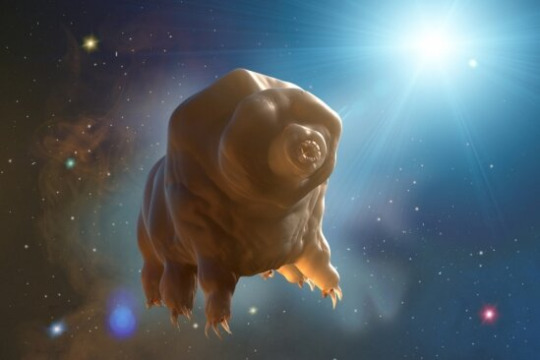
(Image: art of a tardigrade floating in the vacuum of space. End ID. Source: University of California - Santa Barbara)
156 notes
·
View notes
Text
Content Warning: religion and transphobia⚠️
Happy Trans Day of Visibility 🏳️⚧️ I made a comic reflecting on my church upbringing as an eXvangelical trans person. The Jesus conservative Christians claim to represent looked lot more like many of the LGBTQ+ friends I know and love. Just some food for thought 💖










8K notes
·
View notes
Text
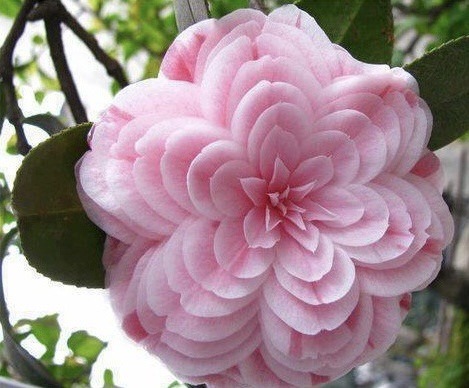
Camellia japonica (the Japanese camellia) is one of the best known species of the genus Camellia. Sometimes called the Rose of winter
4K notes
·
View notes
Text
In order to reach 350 ppm—the level we were at in 1988—we’d need to remove 500 billion tons of CO2 from the atmosphere. To hit the pre-industrial mark of 280 ppm, 900 billion tons. If we were to use plants to accomplish this, we would need them to add 138 billion tons and 249 billion tons of biomass, respectively. This is roughly the equivalent to 1.3 and 2.5 Amazon rainforests, respectively, if we count both above and below ground biomass.
So, what can we do with all that carbon? As the Amazon analogy implies, growing more forests would do the trick. In the last 10,000 years, the Earth has lost 7.7 million square miles of forest, equal to 2.85 Amazons. So we can exceed our target for atmospheric CO2 removal by returning to the 57% forest coverage of Earth’s habitable surface that we had at the end of the last Ice Age. That was the climate that allowed for the vast expansion of humanity, so that approach holds a lot of appeal.
Additionally, the Amazon analogy demonstrates that vast reforested areas can support human civilization beyond simply sucking down CO2. The Amazon itself is a vast food forest filled with edible species that were planted 4,500 years ago by its human occupants, who built a thriving civilization based on the readily available food surrounding them. A contemporary global reforestation initiative should also focus on edible species, thus serving the dual purpose of creating an abundant perennial food source and sequestering CO2. A mature food forest can yield at least 2,100,000 calories per acre with minimal inputs, enough to feed two adults. A stable climate PLUS more free food than all of humanity could possibly eat sounds pretty good.
It goes without saying that climate change is not the only ecological catastrophe facing humanity. We have crossed six of nine planetary boundaries, any one of which could spell our doom. A globe-spanning food forest would help address those looming disasters, such as biodiversity loss and biogeochemical flows, as well.
But there are challenges to the forestry approach. Environmental conditions have degraded immensely in the last 100 years, and it's possible that not all previously forested areas would now support trees. Some estimates put the possibility of reforestation at half of the 7.7 million square miles lost and argue it would take thousands of years to accomplish. I have doubts about these estimates, but it's important to be cautious. Additionally, the principle of redundancy is crucial in permaculture, and it's not hard to see how it applies here: we would not want to put all our eggs in one basket with the future of life on Earth at stake.
So how can we move faster while diversifying our risk?
113 notes
·
View notes
Text

this month's bugs. the outrageous one at the top right is real, Austrospirachtha carrijoi, a rove beetle that parasitizes termite nests
3K notes
·
View notes
Text
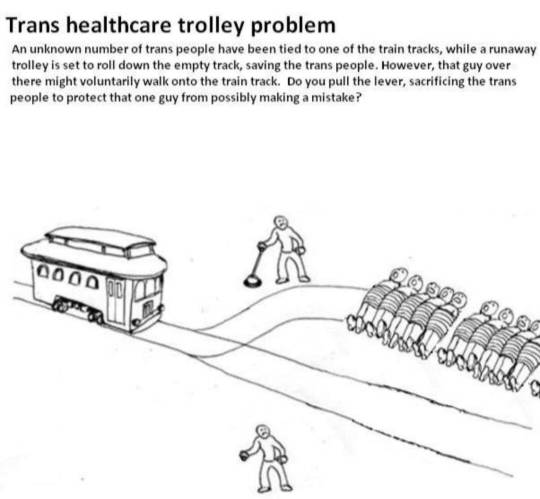
New reaction pic for y'all to be used when you get into an argument about trans healthcare and your opponent starts talking about the 0.8% or whatever or trans people who regret transitioning
41K notes
·
View notes
Text
Please, y’all- help! Every time I get something from the thrift shop (typically the only place I get clothes besides the trash or hand-me-downs) it’s been soaked (by the previous owner) in some disgusting laundry detergent/fabric softener mutant hybrid monstrosity that takes multiple washings to even *fade* and I hate it so much.
Why is this a problem? Am I overreacting?
“This review of the aggregated data to date finds the overwhelming weight of the evidence supports the contention that many laundry and household cleaning products add significant elevated risk to humans in the domains of reproductive/fertility risk; respiratory/pulmonary (asthma, cardiopulmonary disease) risk; neurological/cognitive (ADHD, autism) risk; metabolic (diabetes, obesity) risk; and oncogenic (cancer) risk. We focus discussion on laundry products, the subject of much research and regulatory scrutiny.” —-From “Toxicities of Laundry Products- A Review of the Evidence”
That review particularly implicated fragranced products- the VOC’s from which are the toxic bits- so in many cases, what you smell is actually the harmful part. Mmm, smells like cancer.
Notice, also, that some of these compounds are persistent, bioaccumulative, and toxic- not just for us, but for aquatic life and other creatures.
“In a 2010 study of fragranced products, each product emitted volatile organic compounds that have been identified as toxic or hazardous under federal law. Despite releasing toxic compounds such as chloromethane and methylene into the air, fragrance remains unregulated.88 Some fragrance chemicals are designated as PBT chemicals (persistent, bioaccumulative and toxic) and contribute to the ongoing contamination of air, soil and waterways.” —-Right to Know: Exposing toxic fragrance chemicals in beauty, personal care and cleaning products
This publication is awesome because it makes clear how profitable it is for corporations to sell us unregulated poison. Not much has changed in the US since that was published. In 2022 we got the Modernization of Cosmetics Regulation Act, the first significant update to the Federal Food, Drug, and Cosmetic Act since *1938*, but from what I can tell it doesn’t do shit to protect people or hold companies accountable.
2 notes
·
View notes




